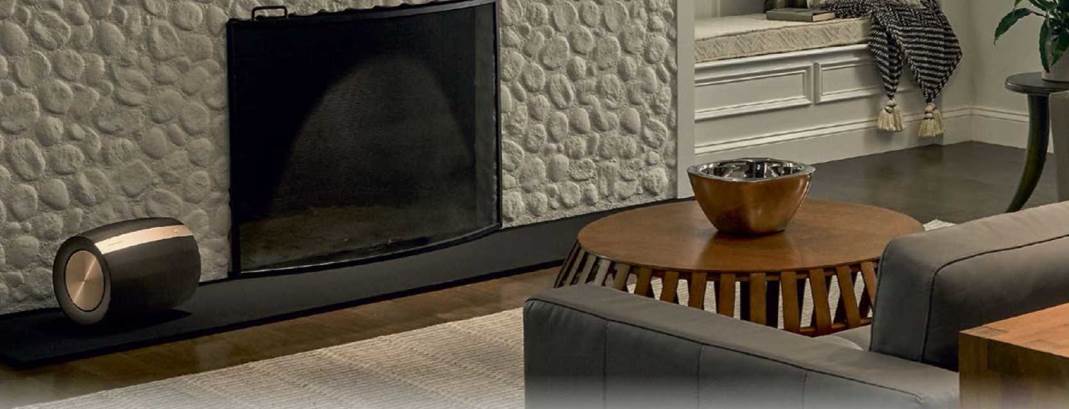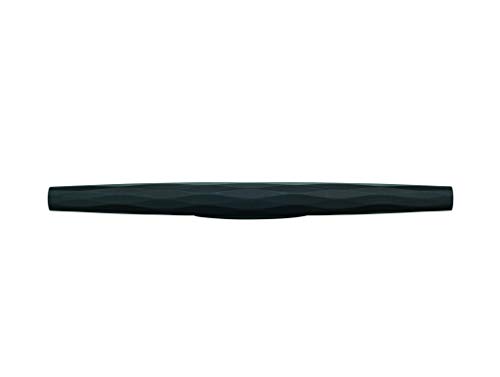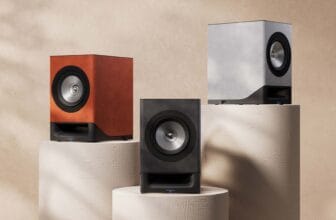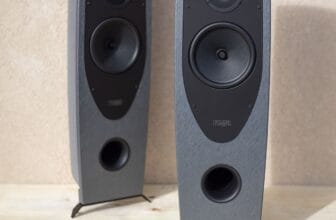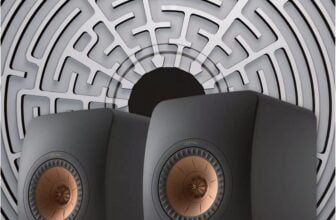BOWERS & WILKINS FORMATION BAR Review
SOUNDBAR + SUBWOOFER + WIRELESS REARS – BOWERS & WILKINS FORMATION BAR
B&W’s Formation Suite is the company’s wireless multiroom” platform. Here we review the Bar soundbar and Bass wireless subwoofer, used with two wireless Flex speakers for surround.
Once upon a time when you’d think of Bowers & Wilkins loudspeakers, you’d think of tradition, of leather armchairs in English clubs, of Queen and country. And of solid loudspeakers, engineered to produce fine sound.
All that’s still the case with many of the company’s loudspeakers, but occasionally it goes radical. It did that with the Nautilus loudspeakers. It did that with the Zeppelin. And now it’s doing it again with the Formation series.
EQUIPMENT
B&W Formation is a fully networked active speaker system that works as high end stereo (particularly with the Formation Duo speakers), as a multiroom speaker system, or as a home theatre system.
Here we’re looking at a home theatre configuration, consisting of the Formation Bar at the front of the room, a pair of Formation Flex speakers for surround, and a Formation Bass for subwoofer duties.
We guess the centre-point of all this is not the drivers or the amplifiers or the usual stuff, but the system of connection. All of these speakers are wireless; indeed the Formation ‘Suite’, as the company calls it, can be considered B&W’s tilt at the wireless multiroom market — like Sonos, but classier. To that end, there is a strong emphasis on streaming and the wireless connection, which uses its own mesh network, not your home Wi-Fi.
The only unit that sports any kind of analogue input at all is the Formation Bass. The Formation Bar has an optical digital audio input, and comes with a short cable, for use with a TV. But otherwise, sound is coming via the network or via Bluetooth. All the speakers have an Ethernet connection available in addition to Wi-Fi.
Both the Formation Bar and Formation Flex speakers support Bluetooth connections, and furthermore they can handle more than the basic Bluetooth SBC codec. They can accept signals using the Apple-friendly AAC codec, and the Android-friendly (sometimes) aptX HD codec. All that’s a useful convenience, but for music listening you’ll probably want to go with the network. That ‘robust mesh’ network system lets the various components within the system work together to route the signals most reliably between themselves.
The Formation Bar features nine drivers. There are three 25mm double-dome tweeters and six 65mm bass/midrange drivers. They are grouped into three sets: each with one tweeter and two larger drivers. The set in the middle has the tweeter between the two larger ones, while left and right have a tweeter towards the respective end of the Bar, with the two larger drivers side by side on the inner side. Each tweeter has 40W available to it, as does each pair of bass/midrange drivers.
The Bar has a flattened section towards its middle upon which it can rest, but it also comes with a sturdy wall bracket.
The Formation Flex speakers are small cylinders standing 215mm tall. Each carries a single decoupled double-dome tweeter and a 100mm bass/midrange driver. The drivers are each powered by 50W. There’s no optical input on the Flex, so it’s all by network or Bluetooth.
The Formation Bass is a remarkably stylish subwoofer, carrying on the cylindrical theme, although this one’s on its side. It has a driver at each end. And it’s really quite small, at only 281mm on its longest dimension. The drivers are 165mm units and the total amplifier power is 250W. Again, its input is Ethernet or Wi-Fi, but it does have an RCA socket, which we assume means that it can also be used within an analogue home theatre set-up.
SET-UP
B&W has done a sterling job when it comes to setting up this system. We followed the rather slim instruction manual: download the app, plug everything in and then follow the app’s instructions. We put the app on an Android phone and followed its instructions. A few seconds after we tapped ‘Let’s get started’, the app found all four devices. It gave us a choice: we could set up each of the four separately, or we could use the ‘Home Theater’ option to set up all the speakers into, well, a home theatre system.
We chose that one and continued to follow the instructions. It first connected to one of the Flex speakers and asked us for our Wi-Fi password. We entered it and the app connected the Flex to the network. Then it went through the other three. We didn’t have to enter the password again.
It told us to plug the optical out of our TV into the optical input of the Formation Bar, and then to set the TV’s output to optical out. Then it talked us through having the Bar learn the volume up, down and mute keys on our TV remote. We tried with our LG OLED’s regular remote, but nothing happened. Then we remembered that that one uses RF. So we tried again with an IR remote we purchased to use with the TV, and it soon learned the codes.
You can set the Formation Bar to repeat IR codes to whatever’s behind it, should its position be interfering with you controlling the TV.
And then the set-up was complete, so the app told us. But of course it wasn’t. There was still the issue of balancing the levels of the speakers and time-aligning them. Those features are in the app settings (see right). The level feature only adjusts the Bar and Flex speakers. A different setting is used to adjust the level of the Bass, so you’re going to have to rely on your own judgement for that, rather than a fixed measurement. You time-align by keying in the distances of each of the speakers, including the subwoofer.
Our initial listening was quite disappointing, because we were using the optical input and it would briefly drop out every five seconds or so. Was it our TV? We put in a CD player instead. Same thing. Was it our optical cable? We swapped it for the optical cable provided with the Bar. Same thing. Okay, with a computer when things are going strange, you perform a reboot. A lot of modern high tech listening gear is somewhat like a computer so we found the bit of the app in which you perform a reboot. That fixed that.
PERFORMANCE
Once we’d set the unit to understand our TV’s IR remote, controlling level was easy. How to select inputs wasn’t obvious. In the app when we tapped on the ‘Formation’ — the name we’d given to the system — it often offered advice about feeding music to the system via Roon or Spotify Connect. Roon is a paid system (around $ per year) which gathers all your digital resources into a consistent, easily-managed, easily-used source for Roon-compatible devices, as this system is. Fine for those who have it. But we also checked out audio fed via the optical input, from Spotify and from Bluetooth.
Pairing for Bluetooth is also via the app. Our fairly expensive Android phone reported that it had connected using the aptX HD codec. That should be backwards-compatible with regular aptX. The Formation system appeared readily on
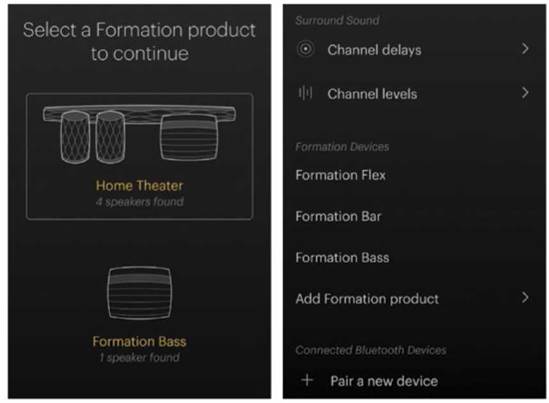
our Spotify Connect list of available speakers when we used the Spotify app.
It also appeared on our iPad as an AirPlay speaker. The Formation system supports the multiroom AirPlay 2. The system does not appear to support DLNA. We could not find a clean way of sending our music selection to the Formation system, only workarounds, such as using a DLNA-app on an iPhone connected via AirPlay. It seems that if you want a high-quality direct feed of music held on your local network you’re going to have to sign up for the paid Roon service. The system does at least come with a free trial.
Sometimes the explanatory page mentioned above appeared in the app. Sometimes the option to select the optical input appeared. We couldn’t quite work out what tipped the balance between one or the other. But tapping on bits of the app usually yielded the results we wanted. Just feeding an optical signal to the Formation Bar woke it up after a few seconds and switched it to that input.
One of the first things we checked out was surround performance. We connected our Blu-ray player to our LG OLED TV via HDMI, and it to the Formation Bar via optical digital. We attempted to set the TV’s output to Dolby Digital and the Blu-ray player’s output to bitstream, but somehow the original Dolby Digital 5.1 never quite made it to the Formation Bar. Instead there was a weak stereo version. It lacked the LFE elements and of course real surround sound. Instead it played as all-channel stereo, something to which we will return.
So we went for a different connection strategy: UHD BD
HOME APP: B&W’s app makes an easy job of set-up and tweaking.
player via HDMI to TV and via optical audio to the Formation Bar. Then we ran into a problem. Our test disc for surround sound was now delivering excellent surround and centre-channel sound, along with LFE to the subwoofer. But the left and right front channels were silent!
To cut a long story short — it involves several different players and cables and much checking of output settings — we ended up rebooting the Formation Bar. That fixed that, again.
The system is limited in home theatre contexts by the provision of only one optical input. Because of the way our otherwise very fine TV fails to pass through Dolby 5.1 unmolested, we had to choose between using the optical input with our disc spinner, and therefore not being able to use the system with broadcast TV, or using the input with the TV and having substandard movie sound.
So, with the player connected to the Formation Bar, we fed assorted material to the system. Our 5.1-channel test disc sounded excellent, with all the audio coming from the correct directions. There’s a powerful 5.1 music track on that disc, and it was remarkable how ‘big’ the Formation made this sound.
But we soon discovered that the system seemed to be locked into a ‘Five-channel stereo’ mode whenever we played two-channel content. When we fed music via optical as PCM stereo, or sent Spotify music to the system, it came out using all the speakers. Which isn’t great for stereo imaging. We searched the app, but could find no way to change playback mode.
But at one point we played the ‘Pure Audio’ Blu-ray version of Supertramp’s ‘Breakfast in America’. This comes with three audio options: LPCM, Dolby TrueHD and DTS Master Audio, all 24-bit, 96kHz. With the last there was no sound. We’d previously tried some DTS CDs, and all that came out was white noise. Apparently the system doesn’t speak DTS.
With the LPCM we got the all-channel-stereo. But with Dolby TrueHD — the Blu-ray player would have sent the Dolby Digital embedded within the Dolby TrueHD audio — we got proper stereo. But when we went back to the LPCM track it was firmly two-channel stereo. We went back to Spotify and it was coming from all speakers with no way to bring things back to the front. We switched between the two a bit. Running Spotify kicked the system into all-channel stereo mode. Playing the Dolby Digital kicked it back into stereo mode for whatever played next. That happened with some other discs as well.
The lack of support for DTS was a limitation. We could get no sound from the main audio track on the UHD version of ‘Harry Potter and the Chamber of Secrets’. Why? Because the English- language track is DTS:X and the Formation system doesn’t support the core DTS that DTS:X contains. We could listen to the Dolby Digital tracks in one of several Continental languages, or
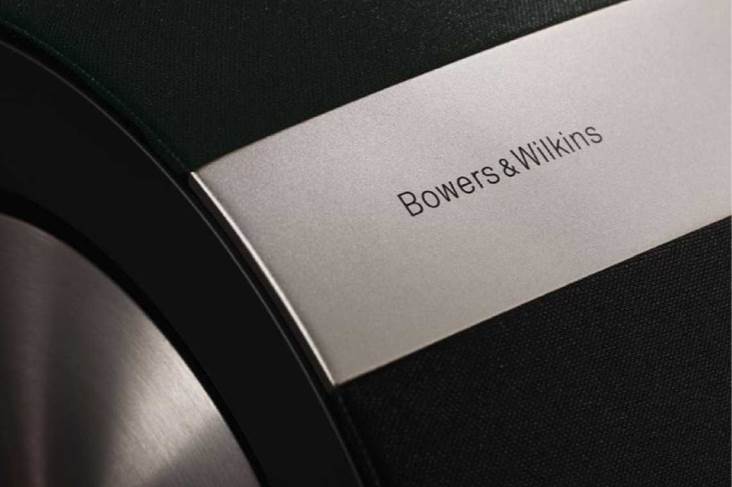
the English Audio Descriptive track. In the end, our workaround was to go into the player settings and have it turn the audio into PCM, although that then came from the front of the room only.
So, how did the B&W Formation system sound? There was no doubt that the system produced a big sound. Indeed, a giant sound. We have used many soundbar-based systems, and we don’t think anything much has come close. A large part of that is due to the Formation Bass. B&W seems to have a particular talent for producing amazing bass from compact devices. It has done that yet again. This compact unit energised our listening room with enormous quantities of clean bass. Kick drums seemed occasionally a little smeared, less energetic than they might have been, but that was more than made up for by the deep, powerful energy pumped into the room.
We ran through half a dozen of our favourite surround sound test scenes in various movies, and the system delivered them all with great authority and superb surround accuracy. Clearly B&W has got the timing perfect, despite the signal being carried via Wi-Fi to most of the speakers.
CONCLUSION
We imagine that B&W will sort out over time such things as the unpredictable stereo/all-channel stereo playback. We’d like to see the app include controls to choose the surround mode. Dolby Surround processing would be welcome.
Likewise, we’d rather not have to rely on a paid service like Roon to feed the terabyte of music stored on our network server to the system, so DLNA compatibility would be welcome. As would at least basic DTS processing.
But the Bowers & Wilkins Formation system has some extraordinary strong points, starting with first-class sound quality. Getting the signals to the speakers wirelessly and in seemingly perfect synchronisation is not an easy thing to do, yet B&W has done it. ”
Bowers & Wilkins Formation Bar, Formation Bass, Formation Flex surround system
- Excellent sound Easy and reliable set-up Very stylish
- Only one optical input No DTS
- Unpredictable playback mode for stereo
- Tested with firmware: 1.6.1
FORMATION BAR
Drivers: 3 x 25mm double dome tweeters, 6 x 65mm woven glass fibre bass/midrange
Quoted frequency response: 40-28,000Hz Amplifier power: 6 x 40W
Inputs: Optical digital audio, Ethernet, Wi-Fi, Bluetooth
Dimensions (hwd): 109 x 1240 x 107mm
Weight (each): 5.5kg
FORMATION FLEX x 2
Drivers: 1 x 25mm decoupled double-dome tweeter, 1 x 100mm woven glass-fibre bass/ midrange
Quoted frequency response: 50-28,000Hz Amplifier power: 2 x 50W
Inputs: Ethernet, Wi-Fi, Bluetooth
Dimensions (hwd): 215 x 130 x 130mm
Weight (each): 2.3 kg
FORMATION BASS
Drivers: 2 x 165mm long throw bass
Quoted frequency response: 20-150Hz Amplifier power: 250W
Inputs: Ethernet, Wi-Fi
Dimensions (hwd): 254 x 281 x 260mm
Weight (each): 12.5kg
CONTACT: Bowers & Wilkins Australia
Telephone: 02 9196 8990
Website: www.bowers-wilkins.net
Bowers & Wilkins Formation Bar - 3 Channel Sound Bar for Hi-Res, Immersive 3D Audio, (3) 1" Tweeters & (6)...
- A LOW-PROFILE, POWERFUL 3 CH SOUND BAR - Featuring (3) 1" double dome tweeters, (6) 2.5" glass-fiber bass/midrange drivers, and a dedicated center channel, the B&W Formation Bar (80W x 3) delivers immersive, room-filling sound with clear, crisp dialogues
